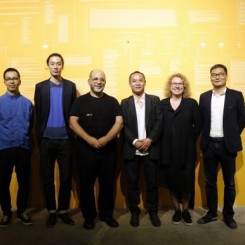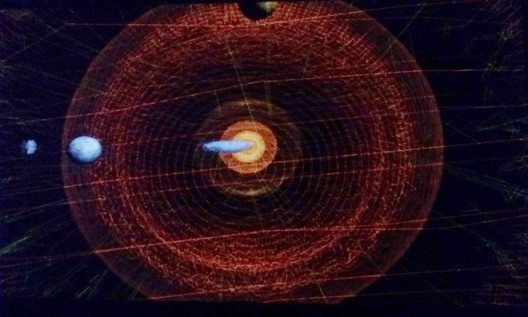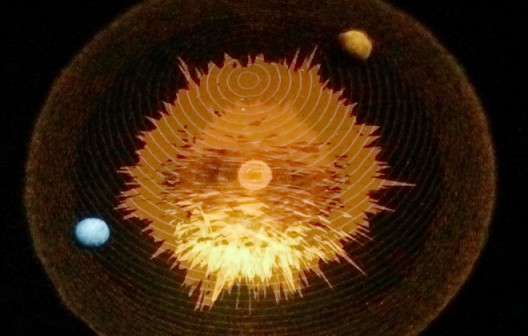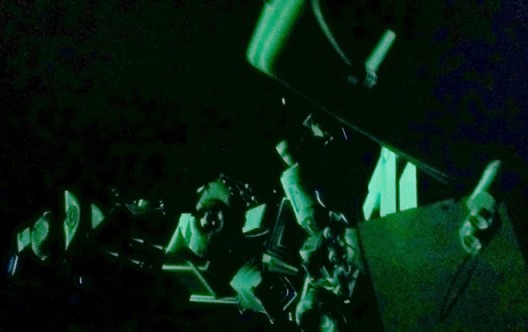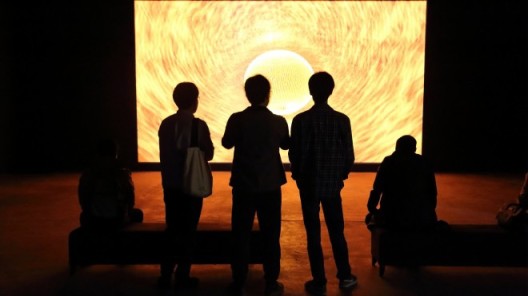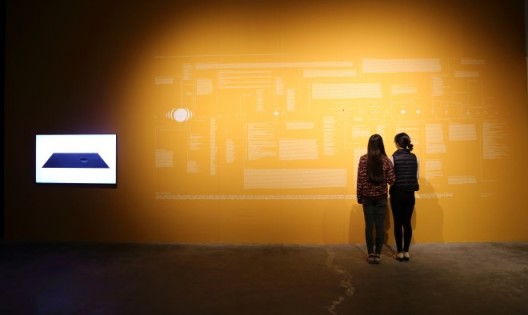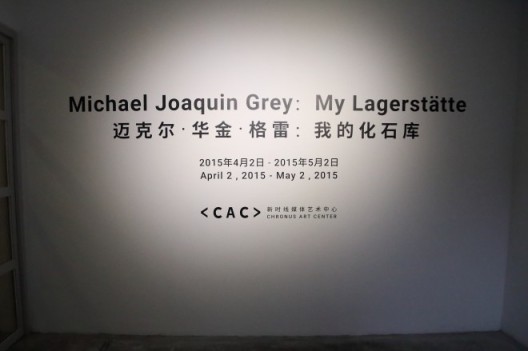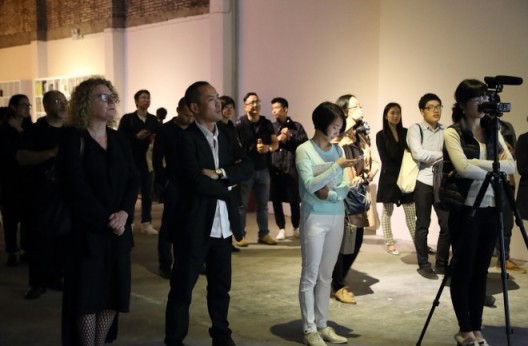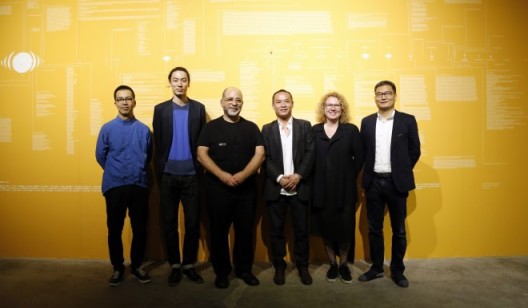“Michael Joaquin Grey: My Lagerstätte”
Chronus Art Center (Bldg 18, No. 50 Moganshan Rd., Shanghai), Apr 2–May 02, 2015
“My Lagerstätte” is an exhibition presented in a simple way. A dark inner space encloses two works while an illuminated outer space provides information; a “libretto”, charting the sources of the audio that spills stutteringly from within, alongside a further work that acts as a preface. The title of the exhibition is defined in a wall text as a place of “cultural storage”, but the exhibition, although literally dealing with culture and storage, has culture unpacked, uprooted, and strewn about. A lot of interpretive information is provided before the works themselves are revealed. The information asserts that one work tracks the evolution of communication media, while another draws a solar system from significant sonic landmarks of the twentieth century. I don’t know what radio station Michael Joaquin Grey listens to but his century mix doesn’t include The Beatles or Xiao Hu Dui: his choice ranges from Alvin Lucier’s “I am Sitting in a Room” of 1969, where the composer allows his voice to become incrementally distorted by the resonance of the space to a point of unintelligibility, to the welcome messages, in many languages, engraved on golden phonograph disks and sent into interstellar space with NASA’s Voyager space probes in 1977.
At the entrance to the inner part of the exhibition, a monitor shows “Primordial Soup (The Second Accumulation)” (2012- 15), an oil-black rectangle on a white field, the black surface boiling with large bubbles bursting on the surface. The unsettled black image fits the format of its monitor in the same way that Kazimir Malevich’s “Black Square” (1915) derived its form and scale from the geometry of its support. Like Malevich’s these visualizations are not representations of specific things, but of something more comprehensive. In this case it is not an axiom of abstract spiritual purity expressed as geometry but mathematics expressed as flow—as data.
Inside the black inner space a flickering animated image of the solar system, “The Sanctuary Orrey” (2011-15), clearly relates to the fluctuating timbre of the soundscape. Outside, the text states that the image is generated from the same material as the digital sound files, “the songs and speeches of a collective past”—this universe is a virtual image constituted by the data passing through it. Despite its surface technology it harks back to the geocentric model of the solar system before Copernicus—space made in the likeness of human culture. This theme is drawn out, with a different emphasis, in a third work, “Umwelt Belt” (2012-15). The work plays over two dim screens that record the history of storage media in 100 objects. The objects, all rendered in universal grey plastic against the emptiness of space, orbit in sequence, from the Gutenberg press to the USB flash drive.
The titles and the mood are heavy. It is something of a relief to step back out and to contemplate the golden straw color of the libretto—a guide or map for “The Sanctuary Orrey.” This wall-sized chart is printed in white text that is difficult but not impossible to read.
In “The Sanctuary Orrey”, an algorithm both sifts the sound sources and uses the output to synthesize the film. If “My Lagerstätte” is taken at face value we cherish our culture and so are endlessly ingenious in devising ways to store it. The important sounds of the twentieth century simply glide into space revealing the quality of our civilization to passing extraterrestrials.
A darker view sees the work fetishize accumulation. Culture has become a function of our ability to digitize everything and make numbers the very center of our universe. In a regime of accumulation the belief that media is impartial is misconceived. The archive of all live culture stored in digital media is a massive chunk of data. Only the vastness of space can match its magnitude. “My Lagerstätte” gives the viewer access, not to the record of civilization, but to the world being reduced to near infinite numbers, dark complexity indecipherable to humans but perfect for intelligent machines. On a planet where 1% of people store 65% of the wealth, seen from space, this may be what our culture looks like.
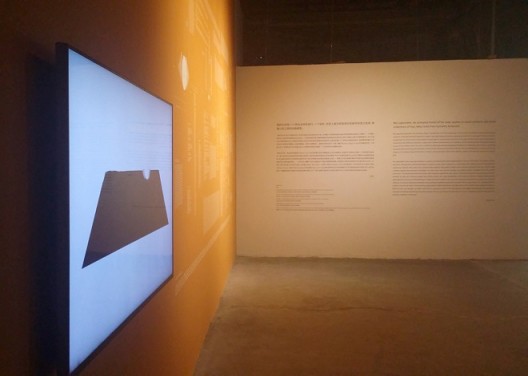
Exhibition view with Primordial Soup (The Second Accumulation) 2012- 15, Photo: Andrew J Stooke
《原初之汤:第二次积聚》展览现场,摄影:Andrew J Stooke

